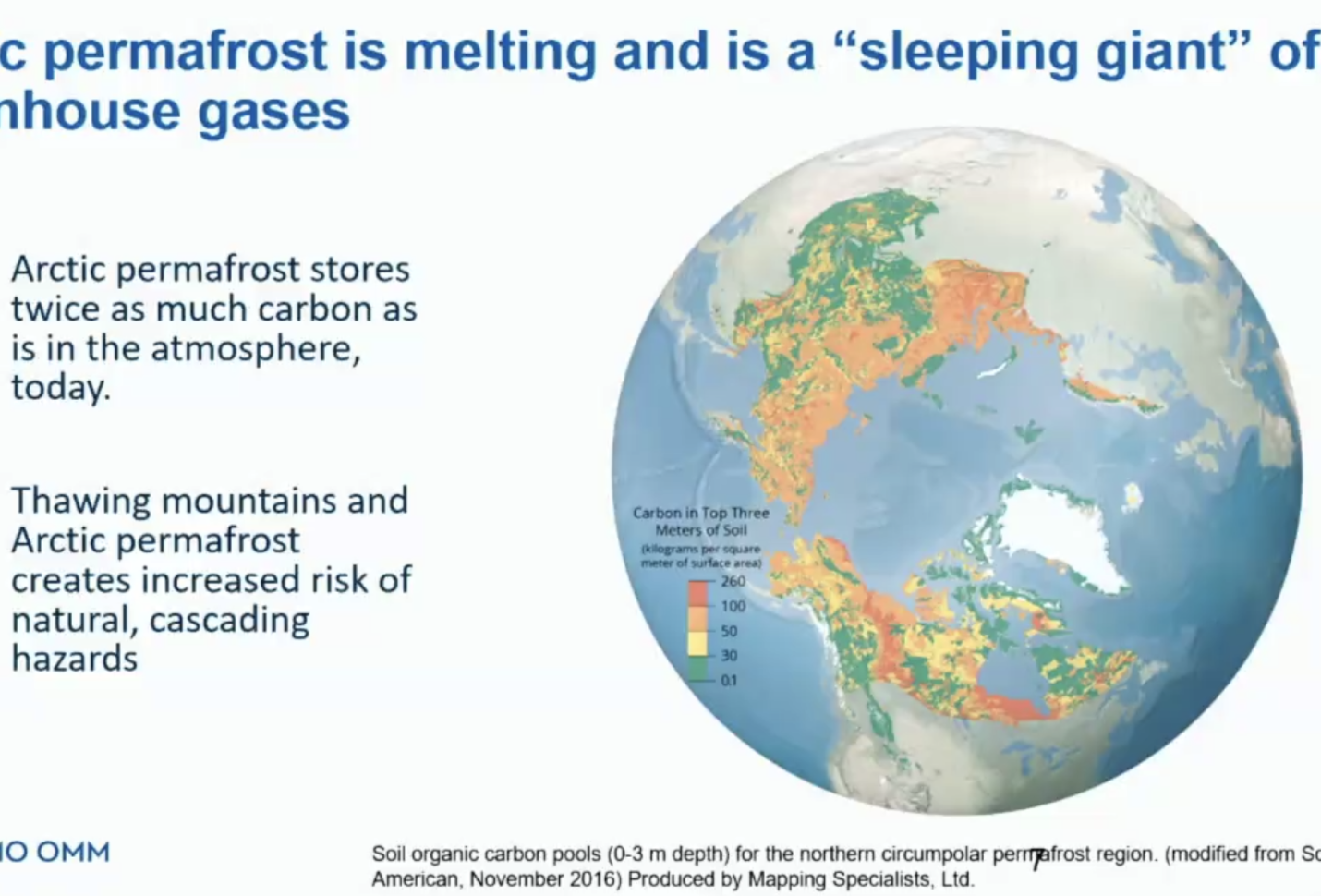
$30 trln in additional investments required to achieve net zero in 8 hard-to-abate sectors
The Net Zero Industry Tracker 2024 estimates that $30 trillion in additional capital will be required across ...

The Meteorological Congress, the decision-making body of the World Meteorological Organization (WMO), endorsed a new resolution calling for mobilizing more funding and ramping up activities to curb the impact of diminishing sea ice, melting glaciers, ice sheets, permafrost and snow on sea level rise, water-related hazards and water security, economies and ecosystems.
The resolution called for more coordinated observations and predictions, data exchange, research and services. It proposes to ramp up activities, with a proposed increased in funding from the regular budget and extrabudgetary funding.
The resolution urged greater investment and mobilization of activities well beyond the World Meteorological Organization (WMO) community. It sets out the high-level priorities and proposed actions, which are linked to WMO’s Long-Term Goals.
The urgency of global and regional emerging risks from the changing cryosphere in a changing climate, is understood and reflected in the workplans of WMO bodies and in global frameworks.
Collaborative and coordinated technical mechanisms are optimized to support advancing service delivery by Members, to address relevant gaps in polar and high mountain regions, at all scales.
Earth system predictions are enhanced through closing gaps in polar and high mountain observations; improving data sharing; and improved numerical models integrating research on cryospheric processes.
Partnerships and collaboration with research and external stakeholders advance knowledge sharing and amplify the existing capacity to deliver services, in a regional relevant manner.
Members’ collaboration in collecting and sharing observations, conducting research, and developing and providing services, is enhanced.
The WMO will elevate the cryosphere to one of its top priorities, given the increasing impacts of diminishing sea ice, melting glaciers, ice sheets, permafrost and snow on sea level rise, water-related hazards and water security, economies and ecosystems.
Delegates from around the world voiced concern that what happens in Polar and high mountain areas affects the whole globe, in particular small island states and densely populated coastal zones.
“The cryosphere issue is a hot topic not just for the Arctic and Antarctic, but it is a global issue,” said WMO Secretary-General Prof. Petteri Taalas.
Sue Barrell (Australia) and Diane Campbell (Canada) who are co-chairs of the WMO’s, Executive Council’s Panel on Polar and High Mountains Observations, Research, and Services, outlined the challenges and the need for urgent action.
Over a billion people rely on water from snow and glacier melt, carried downstream by the major river basins of the world. The irreversible changes in the global cryosphere will therefore affect adaptation strategies and access to water resources.
Arctic permafrost is melting and is a “sleeping giant” of greenhouse gases. Arctic permafrost stores twice as much carbon as in the atmosphere today. Thawing mountains and Arctic permafrost creases increased risk of natural cascading hazards.
Glaciers, Greenland and Antarctica ice sheet melt accounts for about 50 percent of sea level rise, which is accelerating. This is having growing and cascading impacts on small island developing states and densely populated coastal areas.
Cryosphere changes in mountain areas are leading to an increased risk of hazards such as rockslides, glacier detachments and floods. For example, Pakistan has surveyed more than 3000 glacial lakes, of which 36 were potentially dangerous and at high risk for outburst. It suffered numerous glacial lake outbursts and flash floods in 2022 – a year which saw extreme and prolonged heat in March and April and devastating floods in September and October.
There is a need for coordination of activities in Antarctic carried out by Members to meet needs for meteorological data and services and for environmental monitoring and
Global mean sea level is reaching a new record high for the satellite altimeter record (1993-2022). The rate of global mean sea level rise has doubled between the first decade of the satellite record.
The Net Zero Industry Tracker 2024 estimates that $30 trillion in additional capital will be required across ...
Egypt is gearing up for the 2025 Human Development Report, and debt swap initiatives, all ...
The European Bank for Reconstruction and Development (EBRD), the United Kingdom’s High-Impact Partnership on Climate ...


اترك تعليقا